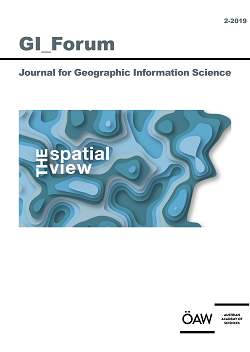
GI_Forum 2019, Volume 7, Issue 2, pp. 129-143, 2019/12/11
Journal for Geographic Information Science

Innovative and disruptive technological innovations trigger educational advances. Novel sensor-based distance and height measurement tools or wearable augmented realty (AR) devices and cameras have recently been introduced into several University curricula focusing on the environmental sector. Consumer gadgets and mobile GIS support students during self-organized fieldwork by displaying collected data in an immersive AR. This paper summarizes the authors’ experiences in implementing a module re-design integrating a new didactical approach to teaching empirical data collection for forest inventories with the use of AR tools and mobile data-collection methods. The new module combines blended and mobile learning and state-of-the-art IT in order to address future professional needs of the forestry sector. The piloting of the module from 2016 to 2018 demonstrated the potential for the forestry sector of mobile learning that uses geospatial information and AR technologies.
Keywords: GIS, Forest inventories, Augmented Reality, Mobile Learning